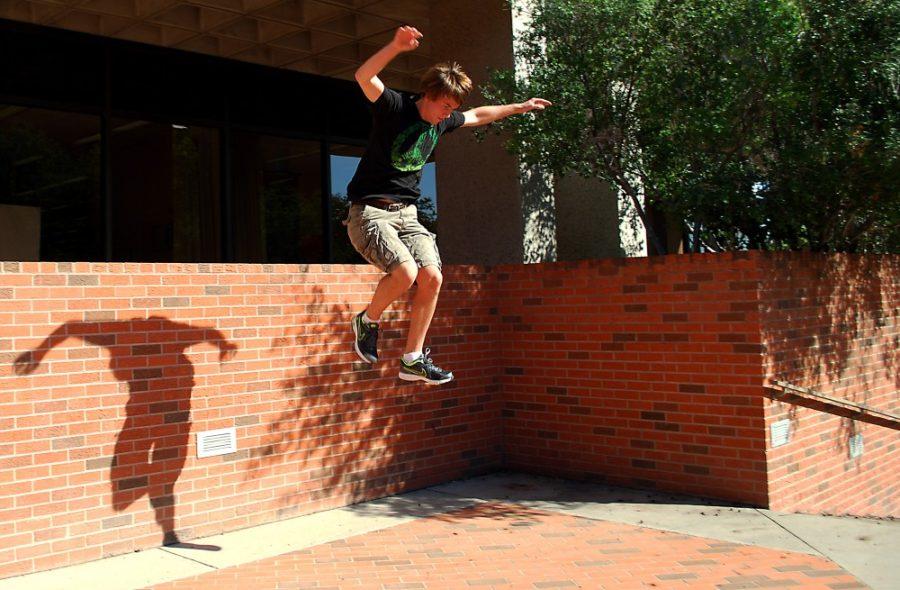Caleb Pocock can do things normally reserved for cartoons and fictional characters. He can scale 10-foot walls with just his hands and feet, hop between ledges 7 feet apart and vault over just about anything. Oh, plus he could probably fall from most heights without hurting himself.
And he does this through parkour.
Pocock is a sophomore studying optical sciences and engineering, but he’s also the treasure of UA Parkour, the club on campus dedicated to training in new-age sport. But what exactly is parkour?
“Parkour is a kind of sport and an art at the same time,” Pocock said. “One of the bases is getting from one place to another in the quickest and most efficient way.”
And when he says that, he means it.
After seeing him backflip off walls and run up trees before leaping over to a nearby ledge, it’s hard to believe that anything could slow Pocock down when he’s on a roll.
It gets better, too. According to Pocock, anyone can learn parkour. It helps to be fit, but the basics only took him about a month to learn. Plus, with the help of a club like UA Parkour — currently around 15 to 20 members strong — a person can really become a parkour professional.
The sport is cheap to pick up since all you need is a pair of shoes, and those who take part say it’s a blast. Sure, it might take some determination to improve, but who in our generation couldn’t use a lesson in hard work?
Pocock showed that parkour can be a good workout too, as by the end of his demonstration, he’d worked up quite the sweat. Then again, that’s part of the idea, and UA Parkour’s mission reflects that.
“(Parkour) is very physically challenging, which keeps you in shape,” Pocock said. “It takes dedication to get better. It’s pretty much to stay fit and have fun.”
That isn’t to say parkour is some kind of alternative workout method. Rather, the members of UA Parkour want to foster an enjoyment of the sport while staying fit in the process.
Both safety and legality are important facets of UA Parkour, and the parkour mentality in general.
“We’re not going higher than 10 feet,” Pocock said. “There’s no climbing on any buildings, statues, memorials … Another important factor for parkour is that it’s meant to leave no trace. No damaging anything. We pay a lot of attention to what we’re doing.”
The UA Parkour club deals with the University of Arizona Police Department and UA Risk Management Services to make sure that their on-campus training isn’t breaking any laws and they don’t have to worry about fines or having to run from cops.
Pocock and his fellow UA Parkour members encourage people to, at the very least, give it a try. If there’s a chance of turning the urban world into your playground, they say go for it.









